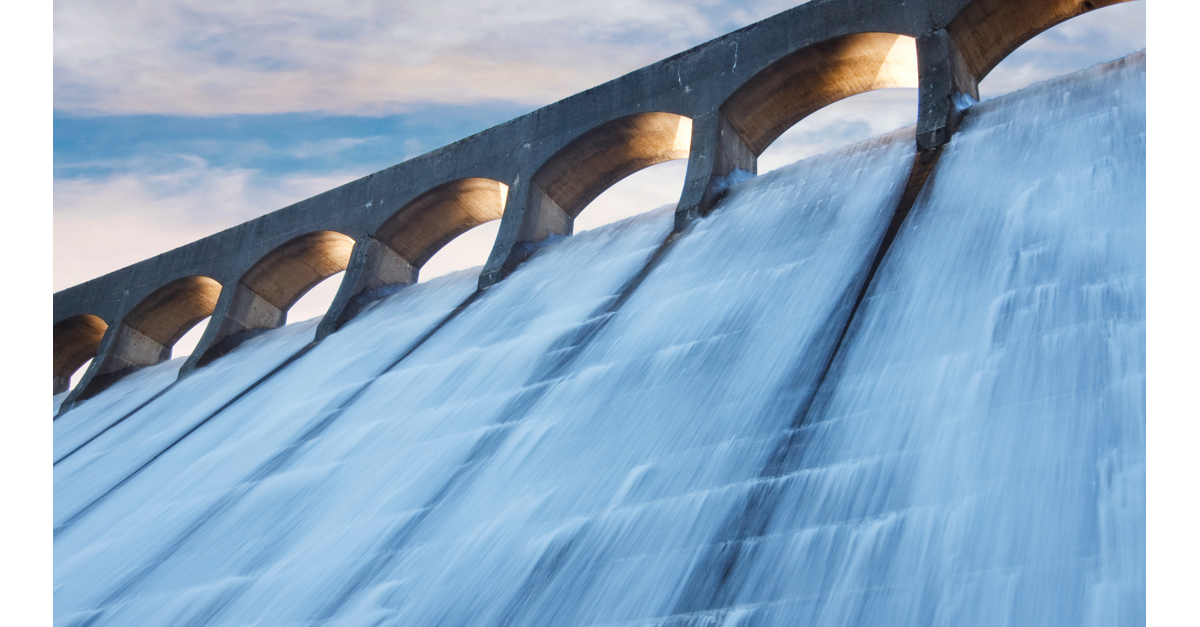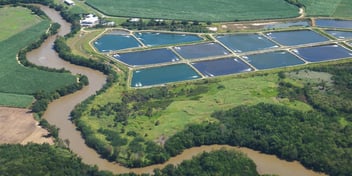Week in water: updates from across the water community

This week in water, a landmark hydrogen project in Western Australia has secured major support from the Federal Government, and a new water-saving tool is helping households track their usage.
Across the states and territories, Kempsey has secured funding for one of the largest water infrastructure projects on the NSW Mid North Coast, Cairns is upgrading critical wastewater treatment systems and Tasmania is set to benefit from a major infrastructure provider establishing a permanent local presence. Internationally, new research reveals how water-focused programs are delivering impact in vulnerable communities worldwide.
Do you want in-depth articles on water trends delivered to your inbox? Sign up for the Australian Water Association’s weekly newsletter, Source.
National
$814 million boost for green hydrogen project in WA
The Murchison Green Hydrogen Project has become the first recipient of funding under the Australian Government’s Hydrogen Headstart program, securing up to $814 million over 10 years.
The off-grid project, located near Kalbarri in Western Australia’s mid-west, is being developed by Copenhagen Infrastructure Partners. It will feature 1,200 MW of solar, 1,700 MW of onshore wind and a 600 MW battery energy storage system, producing renewable hydrogen and ammonia for export. Water for the facility will come from a new desalination plant.
Minister for Climate Change and Energy Chris Bowen said: “This support is about unlocking that private capital to help realise our potential, not only to become a renewable energy superpower but create a Future Made in Australia with real jobs right now”.
Groundwater under pressure as ecosystems show signs of stress
New research from The University of Western Australia has revealed that declining groundwater levels during the 2023–24 summer have pushed some of Perth’s native ecosystems to critical stress points.
Published in Environmental Research Letters, the study found that extreme heat and prolonged drought, combined with long-term pressure on Perth’s Gnangara groundwater system, led to significant dieback across Banksia woodlands and Jarrah forests.
Associate Professor Thompson said: “The health of our native ecosystems is directly linked to our groundwater practices".
“Our research highlights the importance of researchers and water managers collaborating on environmental planning and water management," she said.
New water calculator aims to boost household water literacy
The Water Conservancy has launched GetWaterFit, a new digital tool to help Australians understand how they use water at home.
Created in collaboration with UK-based SaveWaterSaveMoney, the tool guides users through a short Q&A, then offers personalised water-saving tips.
All Smart Water Advice subscribers receive access to a customised version, helping utilities and councils connect with their communities on efficient water use.
States and territories
Queensland plant upgrade to improve sludge management
In Maryborough, a major upgrade of the Teddington Water Treatment Plant is more than halfway complete, backed by a $2 million grant from the Queensland Government’s Building Our Regions program.
The new system will improve the way the plant handles sludge and solids generated during treatment, improving safety and operational efficiency. Fraser Coast Councillor Paul Truscott said the project remains on track for completion by late 2024.
Cairns wastewater plant receives $9.54 million upgrade
Cairns Regional Council is undertaking a major upgrade of the Northern Wastewater Treatment Plant to improve dewatering capabilities and reduce environmental risks.
The new equipment will replace systems installed in 2001, reflecting advances in biosolid treatment and transport efficiency. The updated infrastructure will allow greater reuse of byproducts in fertiliser, energy recovery and composting.
Pensar set to establish HQ in Tasmania
Infrastructure solutions company Pensar is establishing a permanent Hobart headquarters and dedicated local team, signalling its commitment to Tasmania’s growth.
The move supports the state’s $1.9 billion capital investment program and follows Pensar’s delivery of major projects in Queensland and New South Wales.
Pensar Operations Manager Laura Arias said: “This isn’t about a mainland company flying in for a contract and leaving. We’re committed to creating long-term local jobs and a skilled workforce that will help shape Tasmania’s future”.
Kempsey secures $52.9 million for drinking water upgrade
One of the largest water infrastructure projects on the NSW Mid North Coast is now funded, with Kempsey Shire Council, the NSW and Australian Governments contributing to a new filtration plant.
The facility will treat water from Steuart McIntyre Dam and Sherwood Borefield, providing greater drought resilience for Kempsey, Frederickton, Smithtown and Gladstone.
Federal Minister for the Environment and Water Tanya Plibersek said: “This upgrade is about more than delivering critical water infrastructure, it’s a cost of living measure that will benefit the community long term”.
Melbourne’s driest summer sparks water use spike
Melbourne Water has released data showing water use rose to 1,606ML per day this summer – 83ML more per day than in 2024 – amid the city’s driest summer since 2013–14.
Executive General Manager Chris Brace said it was a reminder of the importance of water efficiency: “Conserving drinking water as our city grows will protect our quality of life, and make sure Melbourne remains an exceptional place to live”.
Office furniture finds new life at Yarra Valley Water
Yarra Valley Water has avoided sending hundreds of office chairs to landfill through a refurbishment program that forms part of its circular economy approach.
Chief Financial Officer Natalie Foeng said: “By refurbishing office chairs instead of disposing of them, we’re saving money and reducing waste. This relatively simple action is one of many we’re taking to lead the way in achieving better environmental outcomes”.
Hunter Water upgrades reservoirs across the region
Hunter Water is progressing six reservoir upgrade projects in Morisset, Arcadia Vale, Harpers Hill, The Hill in Newcastle, Cameron Park, West Wallsend and North Lambton.
Executive Manager Customer Delivery Glen Robinson said the $30 million investment is part of the utility’s asset renewals program: “By refurbishing reservoirs rather than replacing them, we’re ensuring a smart, cost-effective investment that benefits our customers now and into the future”.
Orange explores recycled water treatment plant
A preliminary business case is underway to investigate a new purified recycled water demonstration plant in Orange, NSW, the first of its kind in regional NSW.
The plant would treat wastewater to a very high standard for industrial reuse, adding to existing water security measures like stormwater harvesting. The $400,000 business case is backed by Orange City Council and both levels of government, with findings expected by June 2025.
WaterAid Australia’s Victorian Ball raises over $580,000
Held on 21 March at The Sofitel in Melbourne, WaterAid Australia’s annual Victorian Ball drew 550 guests and raised over $580,000 to fund clean water, sanitation and hygiene projects.
Chief Executive Tom Muller thanked the water community for its support: “With the continued support of the Victorian water industry, WaterAid will keep driving forward in 2025 to create a world where everyone, everywhere has access to clean water, decent toilets and good hygiene”.
International
Research drives impact through WASH programs
A new report from the Department of Foreign Affairs and Trade’s Water for Women Fund highlights the powerful role of research in improving water, sanitation and hygiene (WASH) programs in Asia and the Pacific.
Led by the Institute for Sustainable Futures at UTS, the research projects have shaped policy and practice across ten focus areas.
Professor Juliet Willetts said research contributed “through multiple, non-linear pathways” and helped civil society and governments make more informed decisions: “In looking at the Water for Women theory of change, we can see that research contributed through multiple, non-linear pathways to the Fund’s ultimate WASH aim”.
“We and others built up the WASH evidence base, which is the fourth Fund outcome, and research also contributed through many other pathways, for instance as a precursor for better-informed action by CSOs or other stakeholders such as government and private sector actors,” she said.
Want in-depth articles on water trends delivered to your inbox? Sign up for Source, the Australian Water Association’s weekly newsletter.



